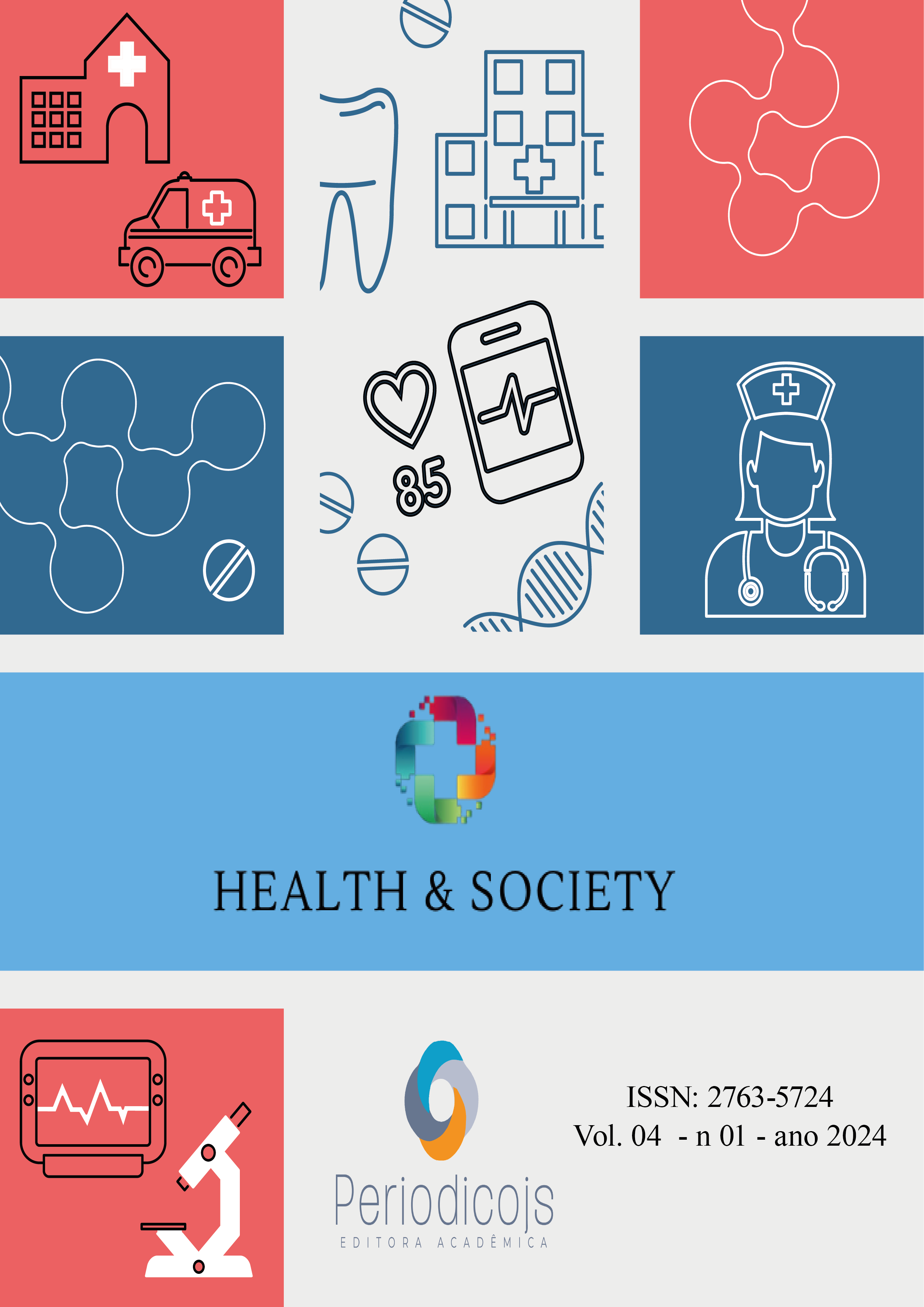Abstract
Introduction: The HIV/AIDS epidemic poses a global challenge to public health, exacerbated by the COVID-19 pandemic. Investigating the effects of this health crisis on AIDS epidemiology in Brazil is crucial. Methodology: Epidemiological, descriptive, and retrospective study using SINAN data from 2014 to 2022, totaling 187,947 cases. Quantitative analysis of distribution by sex, age, race, and region. Results: Reduction in cases observed from 2017, more pronounced in men and in the Southeast and South regions. Male predominance (70% of cases). Concentration in the age range of 20 to 49 years (75% of cases). Browns and blacks more affected. Discussion: Integration of different epidemiological dimensions provides a comprehensive overview of the epidemic in Brazil. Highlights the need for tailored public policies, improvement of information systems, and surveillance. Conclusion: Between 2014 and 2022, analysis of AIDS epidemiological data in Brazil reveals a decrease in diagnoses, particularly among men in the Southeast and South, with possible underreporting. Male predominance, concentration of cases among 20 to 49-year-olds, and racial disparities necessitate customized policies. Enhancing information systems is crucial.
References
Waterfield, Kristie (2021), “Consequences of COVID-19 crisis for persons with HIV: the impact of social determinants of health”, BMC Public Health, 21(1), 299. Electronic version, consulted on, at https://doi.org/10.1186/s12889-021-10296-9.
International AIDS Society (2023), “International AIDS Society”. Page consulted on xx.xx.xx,
Centers for Disease Control and Prevention (2023). “Eliminating HIV as a Global Public Health Threat”. Page consulted on xx.xx.xx, at https://www.cdc.gov/vitalsigns/global-hiv/index.html.
HIV.gov (2023). “Global HIV/AIDS Overview”. Page consulted on xx.xx.xx, at https://www.hiv.gov/
World Health Organization (2023). “HIV - World Health Organization (WHO)”. Page consulted on xx.xx.xx, at https://www.who.int/
Kaiser Family Foundation (2023). “The Global HIV/AIDS Epidemic”. Page consulted on xx.xx.xx, at https://www.kff.org/
Wikipedia (2023). Epidemiology of HIV/AIDS. Page consulted on xx.xx.xx, at https://en.wikipedia.org/
Ministério da Saúde (2023). “SINANWEB - AIDS Adulto - Ministério da Saúde”. Page consulted on xx.xx.xx, at https://sinan.saude.gov.br/
Ministério da Saúde (2023). “Dados Epidemiológicos Sinan - Ministério da Saúde”. Page consulted on xx.xx.xx, at https://datasus.saude.gov.br/
Statista (2023). “New HIV cases in Brazil by gender 2022”. Page consulted on xx.xx.xx, at https://www.statista.com/
Wikipedia (2023). “HIV/AIDS in Brazil – Wikipedia”. Page consulted on xx.xx.xx, at https://en.wikipedia.org/
International AIDS Society (2023). “COVID19 and HIV”. Page consulted on xx.xx.xx, at https://www.iasociety.org/
Centers for Disease Control and Prevention. (2023). “Prevention | HIV Basics | HIV/AIDS | CDC”. Page consulted on xx.xx.xx, at https://www.cdc.gov/.
Joint United Nations Programme on HIV/AIDS (2023). “HIV prevention | UNAIDS”. Page consulted on xx.xx.xx, at https://www.unaids.org/.

This work is licensed under a Creative Commons Attribution 4.0 International License.
Copyright (c) 2024 Antônio Francisco Machado Pereira , Thulio Mendes de Carvalho, Beatriz Maria Andreoli Fellini , Franklin de Souza Sabino , Jésuton Abdon Jude Todohlan Savoeda , Gabriela Nicolle dos Santos Vargas , Jardeson José da Rocha Silva , Victor Prudêncio Ibiapina de Morais , Maria Antônia Oliveira Machado Pereira , Matheus de Sousa Alves





